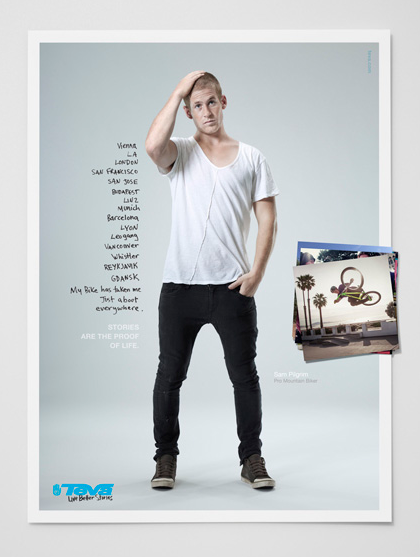Dwight Eschliman (eschlimanphoto.com) has been living and working in San Francisco for over ten years. His work spans a variety of subjects from athletic shoes to Legos, clean rooms to castles in Germany, the newest tech products to beef stew. His editorial photography appears in New York Times Magazine, San Francisco Magazine, Esquire, GQ, Details, New York Magazine, Dwell, and Wired. Dwight's advertising projects include Palm, Clorox, Scion, Microsoft, Adidas, Absolut, Audi, Jawbone, T Mobile, HP, and Beautifull. Dwight lives in Marin with his wife and two sons. With an astounding portfolio of both still work and video work, we wanted to ask Dwight a little more about his simple style which permeates into branding videos like his TEVA project.
DWIGHT'S BACKGROUND IN STILLS AND HIS TRANSITIONS
"I'm a still shooter by training. We shoot with a PhaseOne IQ180 back. For most of our still studio work, it's on a 4x5 camera. Out in the field, it's either on a PhaseOne 645DF camera or a Horseman SW-D II Pro. Most of the motion footage is captured with the Canon 5D Mark II. Some of the other footage has been taken with the RED Camera. I guess it's a natural progression to move into motion. Also, with all the advances in technology within our industry, it's very democratic these days. I'd say I'm still quite early on in the learning process still. Many of the principles are the same, but some aspects of motion capture are pretty mysterious to me. When I decided to start shooting and showing some motion work, my goal was to do it from the perspective of the still shooter. Essentially, my goal was to add motion to my photographs.
GENESIS OF THE TEVA PROJECT
"A friend of mine was freelancing as a Creative Director and was approached by TEVA's marketing department to do a series of print ads and a couple of commercials. Dustin came to me, and we formed a creative partnership. TEVA gave us a loose idea of what they wanted to do conceptually, and Dustin and I worked together to develop concepts and execute. We had a great deal of creative freedom, which made it a pretty rewarding project. I think they were looking for unique perspectives and thought we were a good fit. Realistically, I'm sure that budget played a roll as well. As a small team, we were able to run pretty lean.
LIGHTING AND RAPID SEQUENCES
"We tried to keep the lighting pretty simple for the videos, never more than four lights: HMIs. We decided to shoot all footage on the Canon 5D Mark IIs. For visual cohesion, the rapid sequences were made up primarily of video footage. In a couple of places we ended up using stills to allow us to zoom in (the downside of working with DSLR footage is that you just don't have the pixels to allow you to crop).
THE FUTURE OF MOTION
"Of course I'd like to continue to further integrate motion into my work. There are so many ways to go about it these days it can be a bit overwhelming. There seems to be a strong trend towards creating visuals that are a real hybrid between still and motion..which I think is great for all of us because our commercial clients will be increasingly interested in exploring visuals in new ways. I don't think my philosophy to my work has really changed. In the visual arts, no matter how the visual is created, it will always be about the visual more than about how it was created. We simply have more and more ways to create visuals at our disposal. Sort of obvious I guess, but sometimes I have to remind myself.
PERSONAL WORK
"I've always got a long list of personal projects I'd like to dedicate my time to. I never get to them as often as I'd like, but I keep trying. Right now I'm working on a still project about bicycles.
Stay connected to Dwight: Website | Blog | Twitter
RELATED ARTICLES
Sean Hagwell's Photograph of Music Group "Parachute"
David McLain: From National Geographic Photographer to Cinematographer
Josh Caldwell Talks Architecture Photography


